A Little Chrome Tail
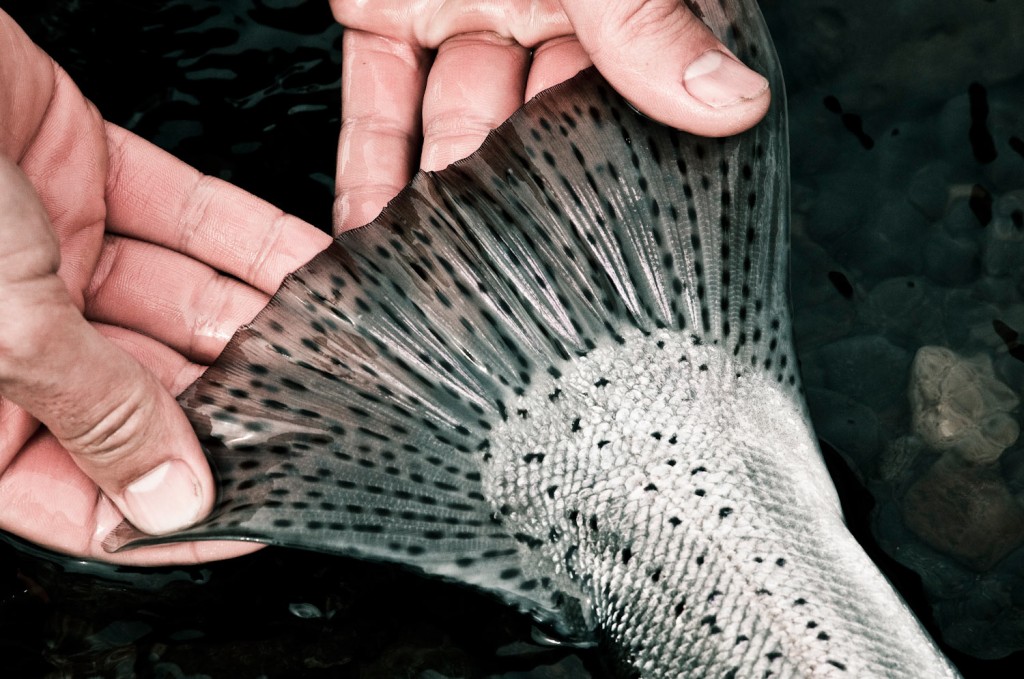
There’s nothing like a little chrome tail to start this day! What a beautiful bright steelhead courtesy of my buddy Jeff Hickman. The bright chrome strips in the tail tell the story. This is a fresh fish, straight from the salt.
Read More »Fixing Line Twist: Video

A day floating the river can turn into frustration when your running line starts to tangle.
There are lots of reasons fly lines get twisted. The most common is being rolled under foot in the bottom of the boat. However it happens, it’s a mess of tangles and knots that make fishing frustrating. There’s nothing worse than landing your fly just short of the strike zone because your running line is tangled.
Fortunately there is a simple trick to fix line twist. I learned this trick from my buddy Zack Dalton of ROI Products and it changed my life. I promise you will love it.
P.S. Watch closely and you’ll see a fish eat my fly behind my back.
WATCH THE VIDEO AND NEVER SUFFER WITH A TWISTED LINE AGAIN.
Read More »Watching Your Fly Line Tells You If You’re Fishing
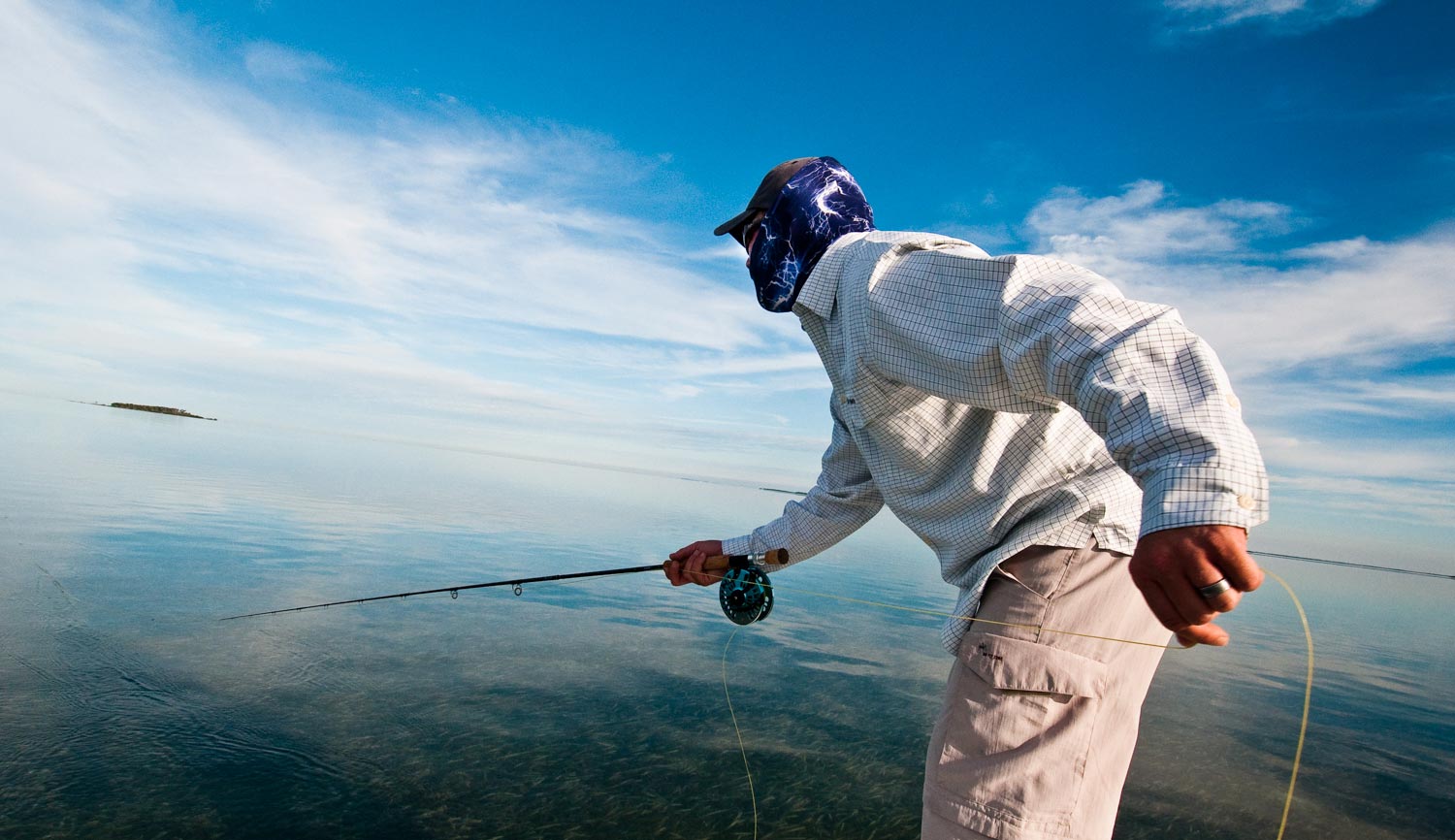
When fly-fishing in saltwater, if your fly isn’t moving, you’re not fishing.
This is one of those ideas that’s dead simple in principal and damned complicated in practice. For a fish to see your fly as food, it must have the right action, but there are factors at work that the angler may not perceive. Have you ever wondered why many saltwater fly lines are so brightly colored? It’s not a fashion statement, it’s a tool and often the key to catching fish.
Too many anglers making the transition from freshwater to salt think of the ocean like a big pond. In truth, it has more in common with a river. The water in the ocean is always moving and it’s often not readily apparent in which direction or how quickly. If you are fishing from a boat, the boat may also be in motion and not necessarily with the flow of the water. On top of all that the wind can influence the motion of the water, the boat and the fly line. It’s a lot to keep up with, but if you don’t you’ll pay the price in missed opportunities.
I’ve seen a lot of good casts fail to produce fish because the angler was not aware that their fly was dead in the water. Picture for a moment that you are on the bow of a flats boat. Your guide is poling against the current when he calls out a fish at 11 o’clock. You make a nice cast but because the boat was moving toward 12 o’clock you failed to notice that the current is coming toward you. If you strip as though you were in still water, you’ll never come tight to the fly. You will only take up the slack as the fly sits dead on the bottom and the fish will swim on by.
The opposite can be just as deadly. Suppose your guide
Read More »Yakima River trout Fishing: Video

Recently I got the chance to float the Yakima River in central Washington.
While attending the launch of the new Sage X rod, the folks at Sage were good enough to host us for a day of fishing on the Yak with guides from Red’s Fly shop. I was fortunate to land on a boat with Jim Mauries of Fly South and Guide Nate Rollie. It was a great day of making loops and fighting fish on a beautiful river.
I took advantage of the opportunity to capture some of Nate’s eleven years of experience with Yakima trout on video. If you are in Washington state the Yakima is a must. The river is full of tough fish and the accommodations at Red’s are amazing.
Watch the video and enjoy “Floating The Yak.”
Read More »10 Tips For Spotting Permit
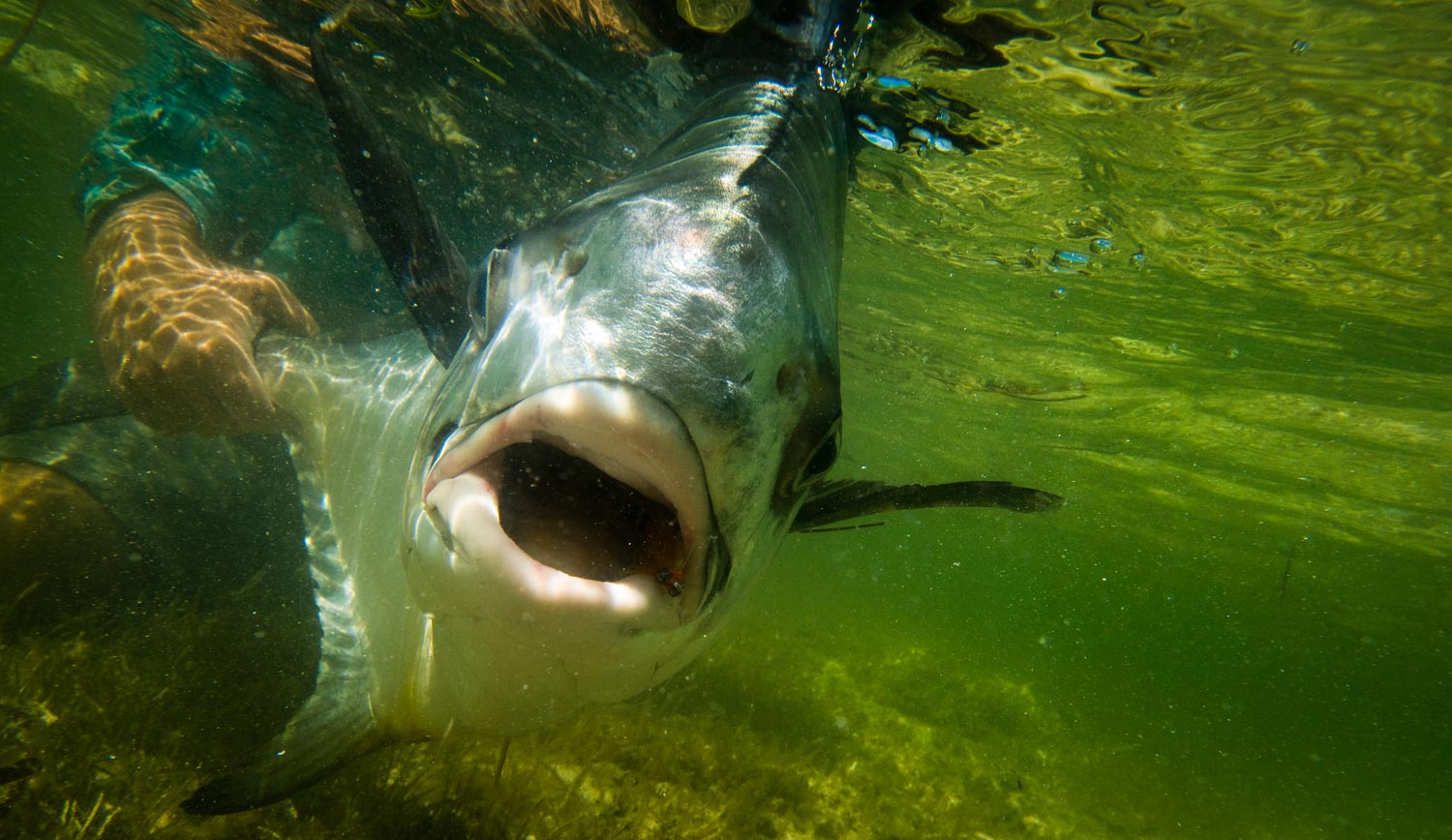
PERHAPS THE LOFTIEST GOAL IN FLY FISHING IS CATCHING A PERMIT.
Maybe it’s not your thing but if there truly is a fish of ten-thousand casts, it’s the permit. There is enough to catching permit to fill a bookshelf or magazine rack. It’s a complicated game, but where it starts is simple. To catch a permit, you must find a permit. And to find a permit, the angler must know what to look for. With that in mind, here are 10 tips to help you spot a permit.
Have the right glasses
This is stupid simple but it really is the most important piece of equipment for the saltwater angler. There is no replacement for quality polarized sunglasses. Good saltwater glasses have a rosy color to the lenses. Pass on green or grey. Copper, rose or brown will offer better contrast. A lighter tint to the lens is valuable on darker days and a frame that shade your eyes is a plus. Glass lenses offer the sharpest vision and, unless you have a heavy coke-bottle prescription, that’s what I recommend.
Tails
The long, graceful forked tail of the permit is its most distinctive feature. It is black in color and stands out when the fish shows its profile. Often the permit’s broad, silver body disappears completely and it is the black double sickle tail that gives him away. This sight is never more exciting than when the tail is held up out of the water. Called ‘”tailing” this happens when the fish feeds off the bottom in shallow water. This means that the fish is actively feeding and the chances of him eating your fly are good.
Spikes
The permit’s long, sickle-shaped dorsal fin will often give him away. When the fish is
Spey Casting With The Non-Dominant Hand on Top

By Jeff Hickman
SOMETIMES YOU LEARN SOMETHING VALUABLE COMPLEETLY BY ACCIDENT.
Last Summer I was on the phone with a good friend and regular client catching up. He was bummed to not be able to fish during his favorite Fall season due to a major shoulder surgery he had on his dominant right shoulder a few months previous. Extensive physical therapy was helping but he still had a lot of pain and his doctor suggested he hold off on fishing for several more months. Being the steelhead addict that he is, I knew that taking the season off would not be good for his mental health. So I told him to come out for a three day Deschutes camp trip and I would teach him to cast left handed which would give his right shoulder a much easier job.
He, like many guys that I fish with, had learned to Spey cast back in the days of the 14ft 9weight and Windcutter with unnecessary cheaters. This era of Spey fishing engrained many with a fast, erratic and borderline violent muscle memory. He had always struggled to sweep and cast slow enough for the modern short Scandinavian and Skagit heads to work properly. With his right hand on top, his fly needed frequent removal from the bushes behind him despite my nearly constant pleas for him to slow down.
So when he showed up for his trip he remained skeptical that he could learn to fish left handed or effectively fish without hurting his shoulder. But I made it very clear that he was to only fish left handed and he was not allowed to risk further injury by putting his right hand on top while casting. For backup, I claimed that his doctor had called me to make sure of this.
With no muscle memory with his left hand on top, I started my instruction from the ground up, walking him through the most important casting steps
Read More »Is 5-Minute Epoxy a Thing of the Past?
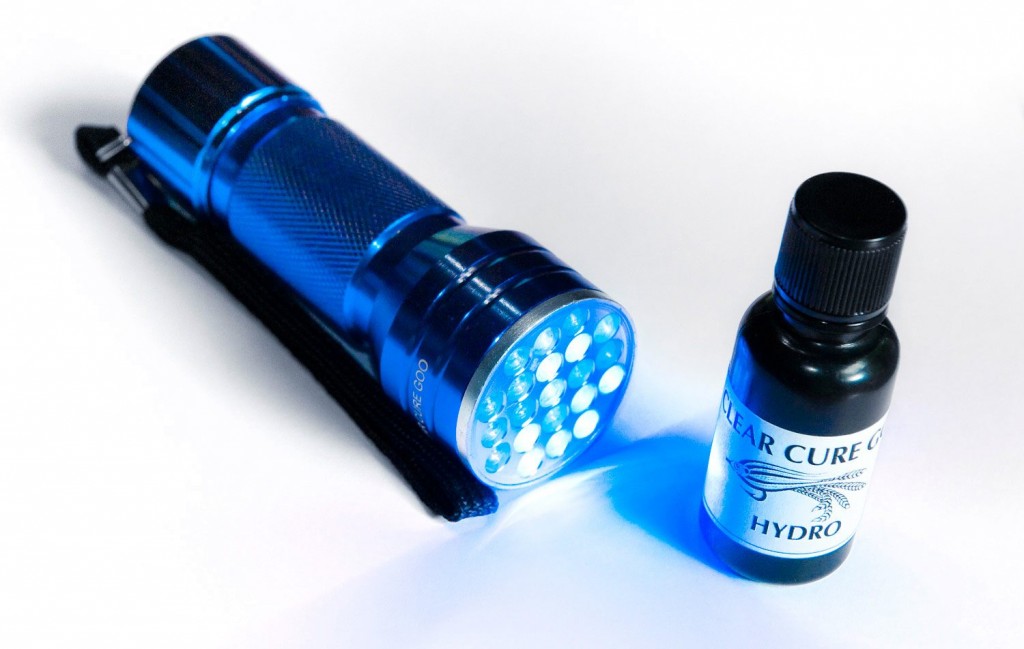
I CAN’T REMEMBER THE LAST TIME I HAD TO BREAK OUT MY SMELLY TWO-PART EPOXY BOTTLES AT THE TYING BENCH.
For several years, 5-minute epoxy was a mainstay in my fly tying. It worked great for molding my streamer heads, coating my popping flies and equally well for putting my finishing touches on the backs of my nymph patterns. Fast forward to present day, however, and epoxy has quickly become a thing of the past. In the eyes of most legitimate fly tiers, epoxy is nothing more than an old school tying material and technique that has become outdated. Innovative fly tying companies like Clear Cure Goo have taken the idea of epoxy and reinvented the wheel by introducing a full line of UV curing products. They serve the same purpose as epoxy but are less messy, more efficient and easier to work with at the vise. After using them, I now look at my life long stash of epoxy bottles on the bench and wonder if I shouldn’t just toss them all in the trash. I could use a little extra room on my tying bench anyway and I’m tired of looking at dried up epoxy patches with wooden stirring sticks adhered on scrap all over my work area.
If you haven’t yet tried or bought into the hype of Clear Cure Goo products, I suggest you test them out. Clear Cure Goo calls their UV curing products “the cure to epoxy”, because you’ll no longer waste time prepping your two-part epoxy for each fly you’re tying, you won’t feel rushed and you’ll have zero waste. Go ahead and keep that 18 rpm epoxy fly and jig turner around if you want just in case, but I’m putting mine on ebay for a few extra bucks towards purchasing more
Read More »Improving Fly Tying Efficiency
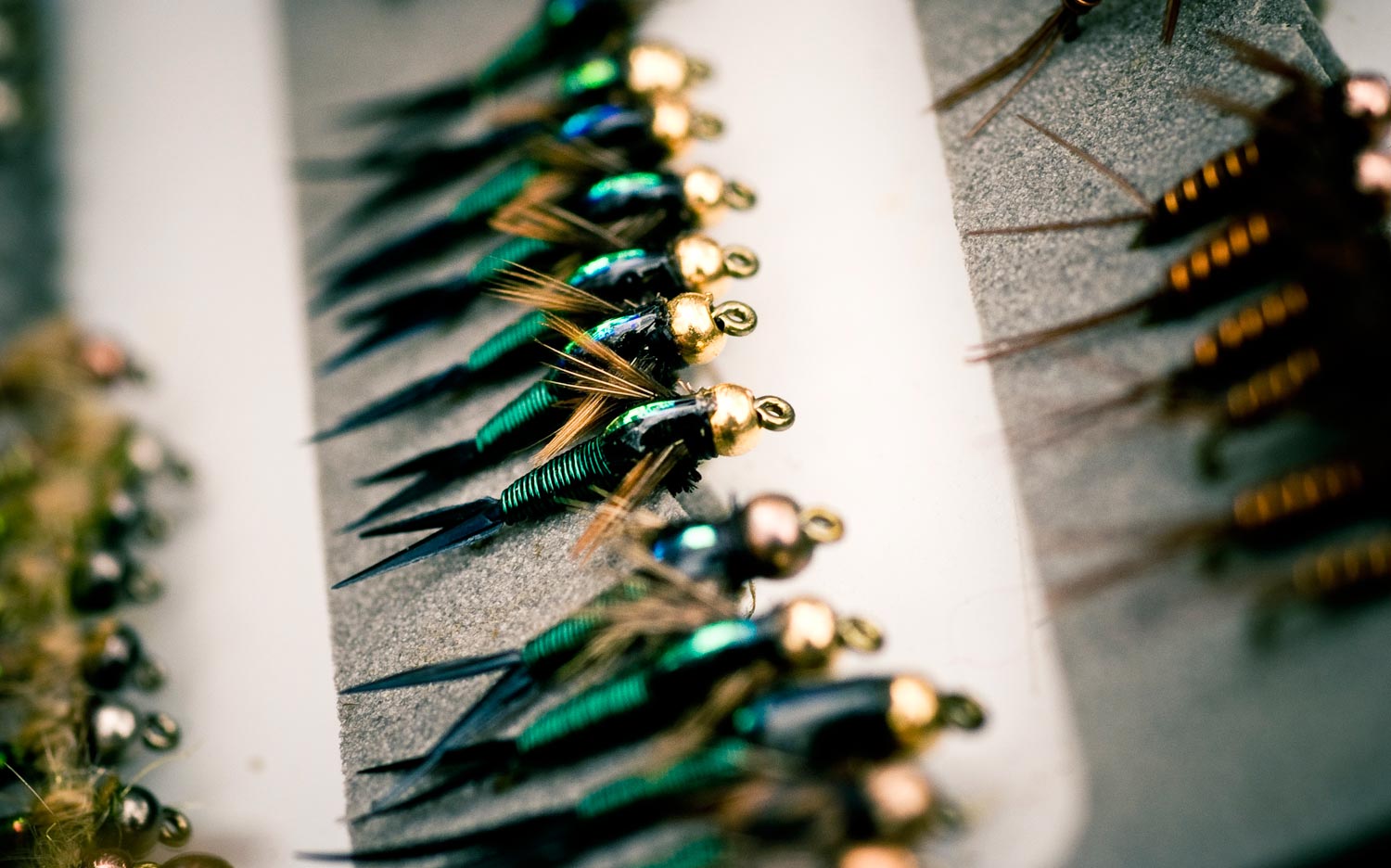
By Bob Reece
Many beginner and novice tiers that I’ve talked to equate improved efficiency at the vise with rushing through the tying process. While applying the techniques below can speed up pattern creation, that result is not their sole purpose. The main focus of these tips is to help tiers get the most out of whatever amount of time they do spend behind the vise.
Material Prep Work
Some patterns require very little in terms of prepping materials. Others, however, involve shaping foam bodies, knotting rubber legs, cutting wing cases or beading hooks. For these flies it is highly beneficial to prepare the materials in bulk before you start tying. When I tie foam terrestrials, I cut all of my foam bodies and the knot rubber legs that I might need. With bead head nymphs, I bead all hooks that I’ll be using as well as cutting any strips of material that I’ll be using for wing cases. If all of your materials are fully prepped before you start tying, you’ll be able to create a larger number of flies in a shorter amount of time. Prepping your materials in mass also increases the consistency and subsequent quality of the bugs that you’ll be offering up to your favorite fish.
Hook/Bead Storage
Hooks and beads can be two of the hardest materials to handle and keep track of on the surface of a tying table. Hooks of all sizes can easily be brushed under other materials or into the abyss of carpet fibers that sit below some of our tying platforms. Beads are also shifty and hard to handle once they leave the confines of their plastic packaging. To prevent these happenings, I store all of my beads and hooks in plastic compartmented organizers like the one in the picture above. The clip down lids of these containers ensure that nothing escapes. Each compartment also has a curved bottom which makes it easy to retrieve the desired items. The containers that I use can be purchased in the sewing section of Walmart for less than two dollars apiece.
Pattern Material Kits
How materials are stored matters in terms of efficiency. I use plastic organizers, like the one pictured above, to create material kits for all of the patterns that I tie. Always knowing where specific ingredients are saves a tier the time of searching though bins, drawers and baskets. This type of setup also
Read More »Catch Trophy Brown Trout By Stacking The Odds In Your Favor
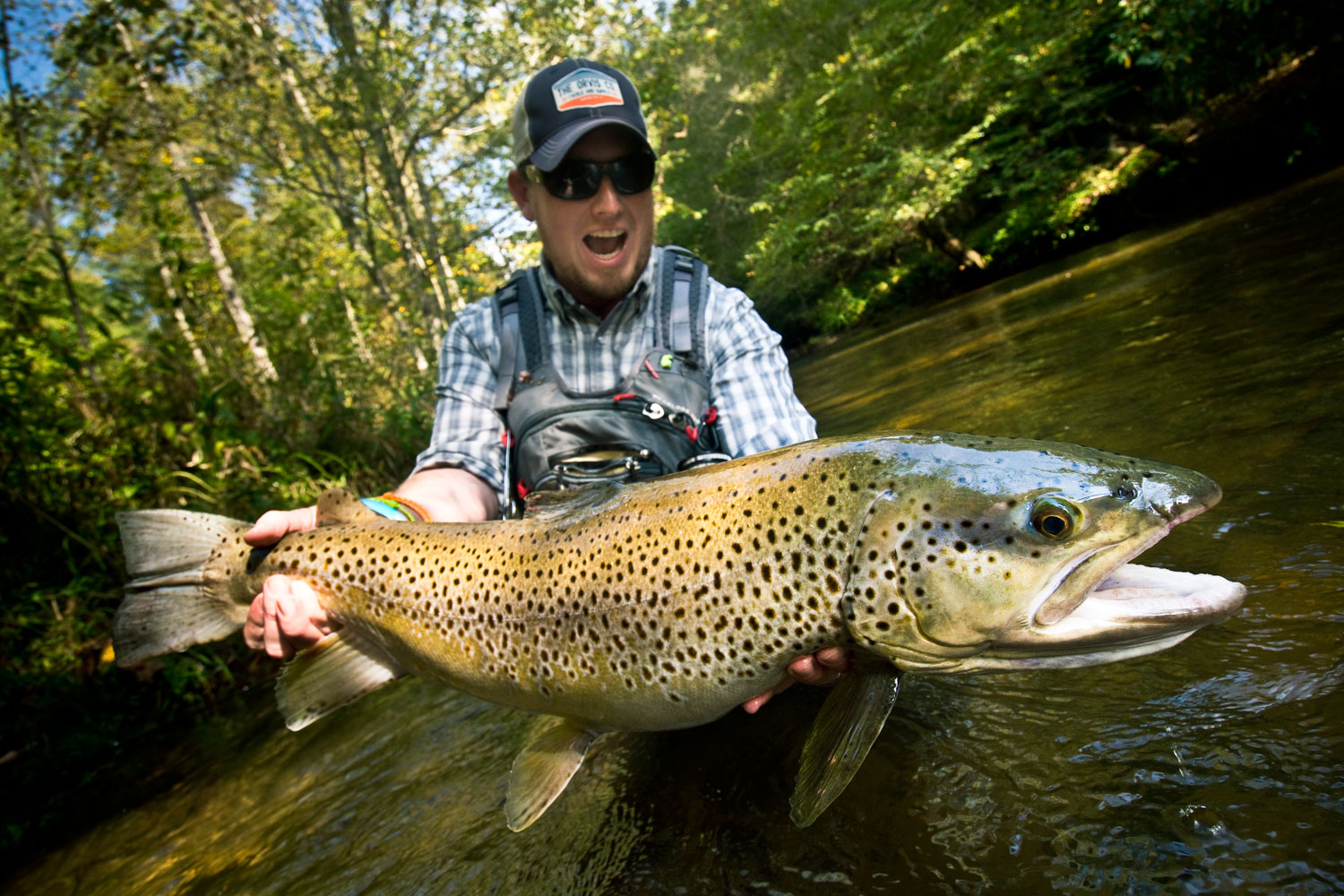
THIS FISH HAS BEEN ALL OVER THE INTERNET. NOW I’M GOING TO TELL YOU EXACTLY HOW TO CATCH ONE LIKE IT FOR YOURSELF.
Once in a while the “perfect storm” really is perfect.
My buddy Dan and I were throwing around some dates for a fishing trip the other day and when those dates started falling in November he said, “As you know, fall will be all about finding big brown trout.”
Brown trout are addictive like almost no other freshwater fish. I can’t tell you how many anglers have told me, “I just want to catch a big brown.” We all want that but if you are serious about turning that want into real-life experience, you’ll need to work for it and you’ll still have to be lucky.
Brown trout are tough customers. Moody, smart and reclusive, they put trout anglers to the test. Especially the big ones. There are two ways to get one. Either you can be lucky and just stumble into it, which is awesome and I highly recommend it, or you can do the leg work and put in the time.
Your best bet is the combination of good timing, the right conditions, the right place and a great presentation. That and persistence will get you what you’re looking for. Here are some guidelines to start with.
LOCATION
You must first be in the presence of big brown trout to catch big brown trout. Finding the right place usually starts with a tip, a fly shop conversation or a photo or article you found on the Internet. Some places are well known for holding big Browns. Reputation alone, however, is not enough to go on.
Once you identify the river where you think you can catch that big boy, you have to start narrowing it down. Brown trout are notorious homebodies, spending most of their lives in one run or even under one rock. There are certain events and times when they will venture out and, to catch them, you either have to know where they are or where they’re going, and when.
I talked to one angler who hunts for big Browns on a local tailwater, and catches them. He has a brilliant, and time consuming, method that works well. He learned from experience that these fish would only eat during high water flows. He goes to the river on low flows with binoculars rather than a rod. He finds big Browns and marks their location on his GPS and returns on high water to catch them.
You can increase your odds by getting after fish in smaller water when they are moving to spawn. Don’t target fish on redds. That’s short sighted and bad for the future populations, but there’s nothing wrong with targeting fish on the move. (Read all about that here.)
My point is, you have to make a plan and do the research.
TIMING AND CONDITIONS
You have to strike when the time is right. By identifying the times and conditions when big brown trout are most likely to be active and aggressive, you raise your odds immensely.
Fall is the peak of brown trout aggression. Browns are fall spawners. The height of their spawning season is around
Read More »The River… Why?
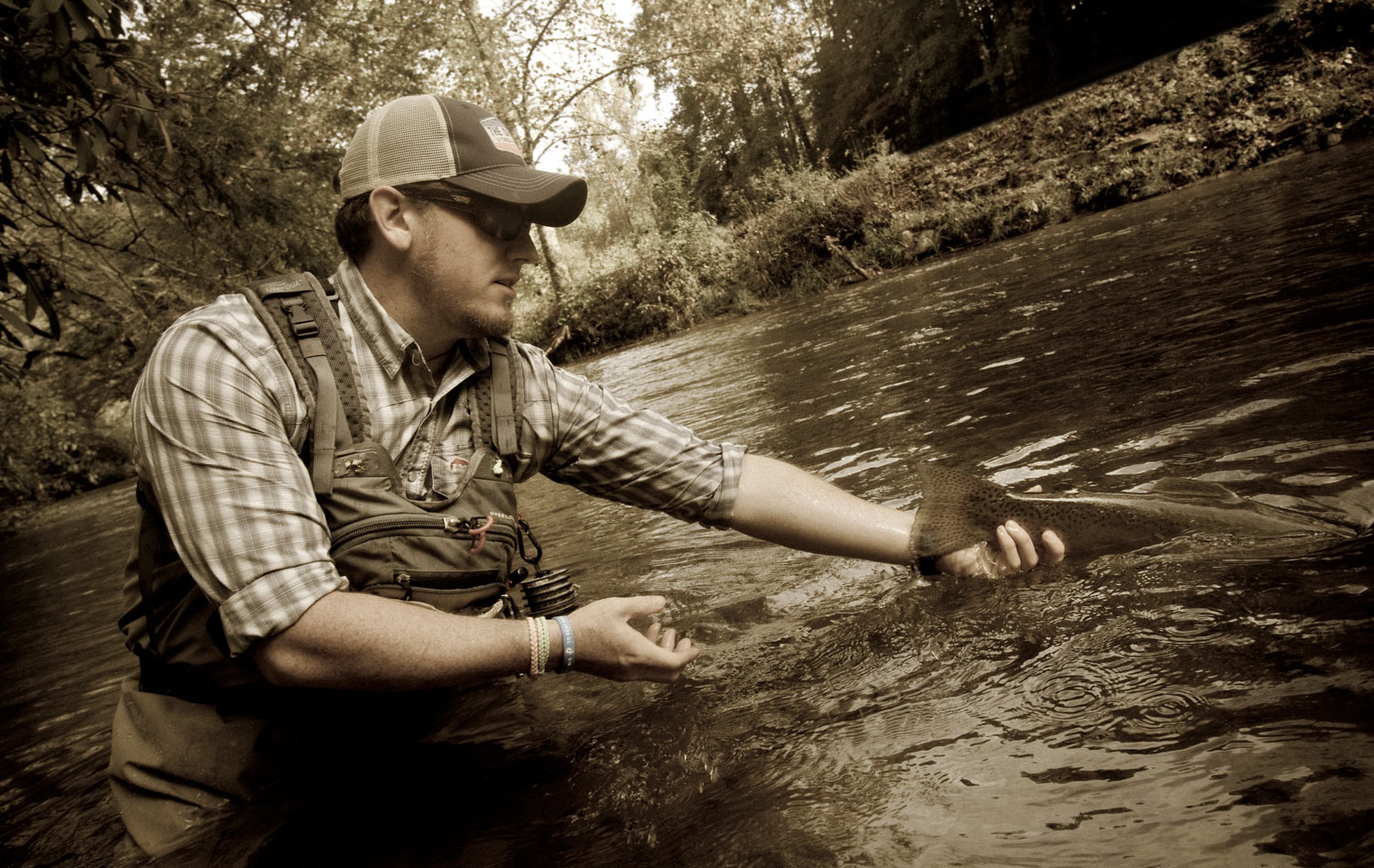
By Justin Pickett
A FAINT FOG ESCAPES ME AS I EXHALE A DEEP BREATH OF MOUNTAIN AIR.
I can hear the tumbling waters of my favorite north Georgia stream just off in the distance. They are surely running super low and crystal clear as expected. My angst is fighting with the need to take my time. I simply cannot wait to drown these flies.
When fishing solo, as I am on this day, I like to put my rod together, place the reel in the reel seat, grab the rest of my gear and head straight for the water. I find my favorite starting point and then I sit on the bank as I tie on my rig. As the sun rises over the mountain, and the fog begins to lift from the water’s surface, I stare into the water, scanning its currents for signs of life. Just a flip of a tail is all I need. I take in a deep breath and exhale, watching my breath as it fogs in the cool mountain air. I feel at peace. There’s nothing here to worry me. I’m safe. I’m not under any time constraints, nor under any pressure. There are no expectations here. It’s just the water and the fish, with the surrounding nature and myself in the background. I am completely at ease in this place.
Yes, fishing and catching fish is fun, and that is surely one of the elements that attracts me to this sport, hobby, passion, past time, or whatever else you prefer to call it. However, to me, it’s more than that.
My wife always likes to ask me, “what do you think about when you’re fishing?” I’m not sure if she thinks
Read More »